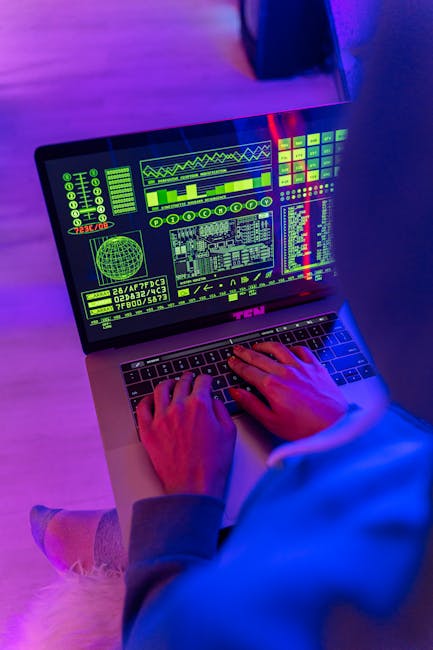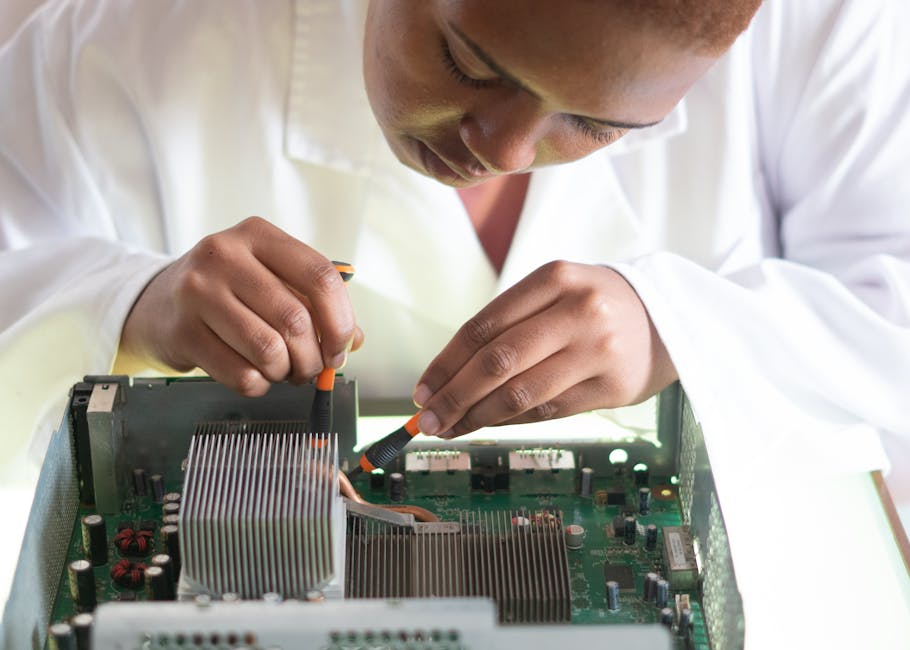Unlock encrypted content
Please enter your SSCE key to initiate on-the-fly decryption.
Decryption key: (Click cancel if you don't have the key)
Copied link to clipboard.
This feature is unavailable for free accounts. Upgrade now and enjoy all Premium benefits.
Go Premium!
This feature is unavailable for free accounts. Upgrade now and enjoy all Premium benefits.
Go Premium!
Please open this page in browser ( Google Chrome or Safari ) to use this feature.
Open In Browser
Spatial Computing: Revolutionizing Data Storage and File Sharing
Random related video for this blog.
Copied share link to clipboard.
Traditional methods often fall short in terms of speed, security, and accessibility. However, with the advent of spatial computing, a new era of data storage and file sharing has emerged, offering unparalleled capabilities and possibilities. This article explores the exciting world of spatial computing, neuromorphic data storage, centralized file permissions, smart contracts, and the human-machine connection, along with other groundbreaking technologies that are shaping the future of data management.
The Power of Spatial Computing
Spatial computing is a cutting-edge technology that combines augmented reality (AR) and virtual reality (VR) with advanced data processing capabilities. It enables users to interact with digital content in a physical space, blurring the boundaries between the real and virtual worlds. With spatial computing, users can manipulate and navigate data in three-dimensional (3D) space, revolutionizing the way we store and share information.Neuromorphic Data Storage: Mimicking the Human Brain
Neuromorphic data storage is a revolutionary approach inspired by the human brain's neural networks. Unlike traditional storage systems, which rely on binary code, neuromorphic data storage harnesses the power of neural networks to process and store information. This technology allows for faster data retrieval, improved efficiency, and enhanced security. By mimicking the brain's structure and functionality, neuromorphic data storage offers a more intelligent and adaptive approach to data management.Centralized File Permissions: Streamlining Access Control
Centralized file permissions play a crucial role in ensuring secure and efficient file sharing. With this feature, users can streamline access control, granting or revoking permissions to specific individuals or groups. By centralizing file permissions, organizations can maintain control over their data, ensuring that only authorized personnel can access sensitive information. This feature is particularly beneficial for collaborative projects, where multiple stakeholders need to share and work on files simultaneously.Protection for Shared Links: Safeguarding Data in Transit
When sharing files online,data security is of paramount importance. Spatial computing platforms offer robust protection for shared links, encrypting data in transit and safeguarding it from unauthorized access. This ensures that sensitive information remains confidential, even when shared with external parties. With protection for shared links, users can confidently share files with colleagues, clients, or partners, knowing that their data is secure throughout the transfer process.
Smart Contracts: Automating File Sharing Agreements
Smart contracts, powered by blockchain technology, are revolutionizing the way agreements are made and enforced. In the context of file sharing, smart contracts can automate and streamline the process, eliminating the need for intermediaries and reducing the risk of human error. These self-executing contracts can define the terms and conditions of file sharing, ensuring that all parties involved adhere to the agreed-upon rules. This automation not only saves time and resources but also enhances transparency and accountability.Zip Entire Folder: Simplifying File Compression
File compression is a common practice to reduce file size and facilitate faster transfers. Spatial computing platforms offer the convenience of zipping entire folders, allowing users to compress multiple files into a single archive. This simplifies the file sharing process, making it easier to send large volumes of data quickly and efficiently. By compressing entire folders, users can save time and bandwidth while ensuring that all relevant files are delivered in a single package.3D Data Storage: Expanding Possibilities
Traditional data storage is primarily two-dimensional, limited to files and folders organized in a hierarchical structure. However, with the rise of spatial computing, 3D data storage has emerged as a game-changer. In this paradigm, data is represented in a three-dimensional space, enabling users to organize and access information in a more intuitive and immersive manner. 3D data storage opens up exciting possibilities for industries such as architecture, engineering, medicine, and entertainment, where spatial relationships are critical.The Human-Machine Connection: Enhancing Collaboration
Spatial computing technologies bridge the gap between humans and machines, enabling a more natural and intuitive interaction. Through gestures, voice commands, and haptic feedback, users can seamlessly navigate and manipulate data, enhancing collaboration and productivity. This human-machine connection empowers individuals to leverage the full potential of spatial computing, making complex tasks simpler and more accessible.Time Travel: A Glimpse into the Future
While time travel remains a concept confined to the realms of science fiction, spatial computing offers a glimpse into a future where the boundaries of time and space are blurred. By leveraging advanced technologies, such as augmented reality and virtual reality, spatial computing enables users to explore historical events, visit distant locations, and experience immersive simulations of the past and future. This opens up exciting possibilities for education, entertainment, and research, revolutionizing the way we perceive and interact with time. In conclusion, spatial computing, neuromorphic data storage, centralized file permissions, smart contracts, and other emerging technologies are transforming the landscape of data storage and file sharing. These advancements offer enhanced speed, security, and accessibility, empowering individuals and organizations to manage their data more efficiently. As we embrace the future of spatial computing, the possibilities for innovation and collaboration are limitless.Frequently Asked Questions (FAQs)
Question: How does spatial computing revolutionize data storage and file sharing? Answer:
Spatial computing combines augmented reality and virtual reality with advanced data processing capabilities, allowing users to interact with digital content in three-dimensional space. This revolutionizes data storage and file sharing by offering a more intuitive and immersive experience.
Question: What is neuromorphic data storage? Answer:
Neuromorphic data storage mimics the structure and functionality of the human brain's neural networks. It enables faster data retrieval, improved efficiency, and enhanced security compared to traditional storage systems.
Question: How do smart contracts automate file sharing agreements? Answer:
Smart contracts are self-executing contracts powered by blockchain technology. In the context of file sharing, they automate and streamline the process, defining the terms and conditions and ensuring that all parties adhere to the agreed-upon rules.
Question: How does 3D data storage expand possibilities? Answer:
3D data storage enables users to organize and access information in a three-dimensional space. This opens up exciting possibilities for industries where spatial relationships are critical, such as architecture, engineering, medicine, and entertainment.
Case Studies Case Study 1: Company X Implements Spatial Computing for Efficient Data Management Company X, a leading architecture firm, adopted spatial computing to enhance their data storage and file sharing capabilities. By leveraging augmented reality and virtual reality, the firm's architects can now visualize designs in three dimensions, improving collaboration and reducing errors. With the implementation of neuromorphic data storage, data retrieval times have significantly decreased, allowing the team to access critical project information in real-time. The centralized file permissions feature enables seamless collaboration with external stakeholders, ensuring that only authorized individuals can access sensitive project files. By embracing spatial computing, Company X has transformed their data management processes, leading to increased efficiency and client satisfaction. Case Study 2: Research Institution Y Utilizes Smart Contracts for Secure Data Sharing Research Institution Y, a renowned scientific organization, has implemented smart contracts to streamline their data sharing agreements. By leveraging blockchain technology, the institution has automated the process of granting and revoking file access permissions, reducing administrative overhead and eliminating the risk of human error. The smart contracts ensure that all parties involved adhere to the agreed-upon terms, enhancing transparency and accountability. With the protection for shared links feature, Research Institution Y can securely share research findings with external collaborators, confident in the knowledge that their data remains confidential throughout the transfer process. The implementation of smart contracts has revolutionized the institution's data sharing practices, enabling seamless collaboration and accelerating scientific advancements. Case Study 3: Education Provider Z Implements 3D Data Storage for Immersive Learning Experiences Education Provider Z, a global online learning platform, has embraced 3D data storage to enhance their course offerings. By organizing course materials in a three-dimensional space, students can interact with information in a more immersive and engaging manner. This approach allows for a deeper understanding of complex subjects, such as anatomy or physics, by visualizing concepts in a spatial context. Education Provider Z's adoption of spatial computing has transformed the learning experience, making it more interactive and accessible for students worldwide. By Amelia Isabella
Email: [email protected]
Related
Digital Transformation: Empowering the Future with IoT, Cloud Computing, and...
July 19, 2023
Read More
Efficient File Management System: Simplifying Data Storage and Security for...
July 19, 2023
Read More
Radar Systems: Revolutionizing Smart Contracts, File Collaboration, and More
July 19, 2023
Read More
Scalable Cloud Storage Architecture: Empowering Data Privacy and Collaboration
July 19, 2023
Read More
Robotics Online: Revolutionizing Data Storage with Cloud Technology and Artificial...
July 20, 2023
Read More
Sharing Sensitive Data: Exploring the Future of Brain-Machine Interfaces and...
July 20, 2023
Read More
<h1>Maximizing Data Storage and Sharing: Exploring the Limitations and Advancements...
July 20, 2023
Read More
Cutting-edge Innovations in Cloud Hosting: Exploring the Advantages of FileLu
July 20, 2023
Read More
Popular
Latest
The Future of Digital Transformation: Exploring Smart Homes, Efficient File...
November 30, 2025
Read More
Exploring the Benefits of Cloud Storage and Innovative Technologies in...
November 26, 2025
Read More
The Future of Technology: Exploring Biohacking, Space Tourism, and Digital...
November 23, 2025
Read More
The Future of File Sharing: Streamlined Workflows for Photographers and...
November 19, 2025
Read More
Exploring the Intersection of Technology: From Cybersecurity to Augmented Reality...
November 16, 2025
Read More
The Future of File Management: Embracing Edge Computing and Efficient...
November 12, 2025
Read More
The Future of File Sharing: Exploring User-Friendly Solutions and Data...
November 5, 2025
Read More
The Future of Cloud Storage: How FileLu Empowers Creative Professionals...
November 2, 2025
Read More
The Future of Autonomous Technologies: Innovations in Robotics, File Sharing,...
October 29, 2025
Read More
Emerging Technologies Revolutionizing File Management: From Li-Fi to Robust Collaboration...
October 26, 2025
Read More
Emerging Technologies: Exploring the Impact of File Access Auditing, Genetic...
October 19, 2025
Read More
The Future of Data Storage: Exploring Advanced Encryption, Mobile Integration,...
October 5, 2025
Read More
Exploring the Future of Data Management: Security, Efficiency, and Cognitive...
September 28, 2025
Read More
Revolutionizing Data Management: Innovations in Storage, Security, and Sustainable Technology.
September 24, 2025
Read More
















